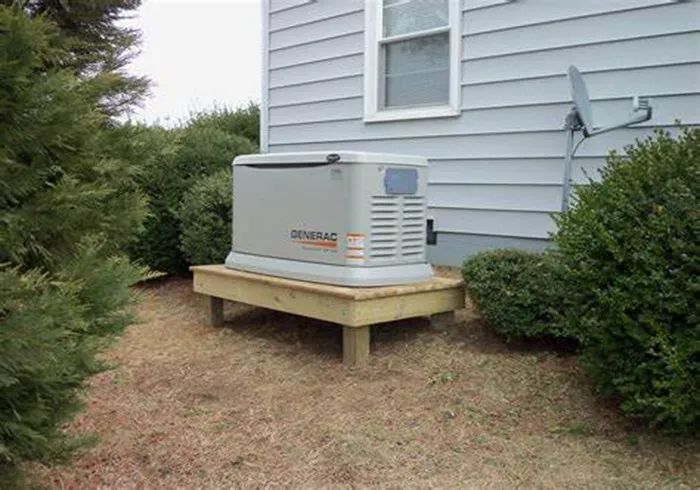Generators and motors are two of the most essential devices in the world of electrical engineering. While they serve different purposes, they share many similarities in their design, working principles, and applications. This article will explore how generators and motors are alike, breaking down their functions, components, and the science behind their operation.
What Are Generators and Motors?
Before diving into their similarities, let’s define what generators and motors are.
Generators: A generator is a device that converts mechanical energy into electrical energy. It works based on the principle of electromagnetic induction, discovered by Michael Faraday. Generators are used in power plants, vehicles, and even portable devices to produce electricity.
Motors: A motor, on the other hand, converts electrical energy into mechanical energy. It uses the interaction between magnetic fields and electric currents to produce motion. Motors are found in appliances, industrial machinery, and vehicles.
While their primary functions are opposite, their underlying principles and designs are strikingly similar.
The Working Principle: Electromagnetic Induction
Both generators and motors operate on the principle of electromagnetic induction. This principle states that a changing magnetic field can induce an electric current in a conductor, and vice versa.
In a generator, mechanical energy (like rotation) moves a conductor through a magnetic field, generating an electric current.
In a motor, an electric current is passed through a conductor in a magnetic field, causing the conductor to move (mechanical energy).
This shared principle is the foundation of their similarities.
Key Components: Stator and Rotor
Generators and motors have two main components in common: the stator and the rotor.
Stator: The stator is the stationary part of the device. It typically contains coils of wire that create or interact with a magnetic field.
Rotor: The rotor is the rotating part of the device. It is connected to the shaft and moves relative to the stator, either generating electricity (in a generator) or producing motion (in a motor).
The interaction between the stator and rotor is what enables both devices to function.
Energy Conversion: Two Sides of the Same Coin
Generators and motors are essentially two sides of the same coin when it comes to energy conversion.
Generator: Converts mechanical energy (input) into electrical energy (output).
Motor: Converts electrical energy (input) into mechanical energy (output).
This duality means that, under certain conditions, a generator can function as a motor, and vice versa.
Construction and Design Similarities
The construction of generators and motors is remarkably similar.
Both devices consist of:
Magnetic Fields: Permanent magnets or electromagnets create the necessary magnetic fields.
Coils of Wire: Conductors (usually copper wire) are wound into coils to interact with the magnetic fields.
Commutators or Slip Rings: These components ensure the flow of electricity in the correct direction, especially in DC motors and generators.
The design similarities make it easier to understand and repair both devices.
Types of Generators and Motors
Generators and motors come in various types, and many of these types have direct counterparts.
AC Generators and AC Motors: Both operate using alternating current and are widely used in industrial and household applications.
DC Generators and DC Motors: These use direct current and are common in smaller devices and vehicles.
Synchronous and Asynchronous Types: Both generators and motors can be synchronous (rotating at a fixed speed) or asynchronous (speed varies with load).
The parallel types highlight their interconnected nature.
Applications in Everyday Life
Generators and motors are everywhere, often working together in systems.
Power Plants: Generators produce electricity, while motors power the machinery used in the plant.
Electric Vehicles: Motors drive the wheels, while regenerative braking systems use the motor as a generator to recharge the battery.
Household Appliances: Motors are used in fans, washing machines, and refrigerators, while portable generators provide backup power during outages.
Their applications demonstrate how they complement each other in modern technology.
Efficiency and Losses
Both generators and motors face similar challenges when it comes to efficiency and energy losses.
Heat Loss: Resistance in the wires generates heat, reducing efficiency.
Friction Loss: Mechanical parts like bearings and brushes cause friction, leading to energy loss.
Magnetic Losses: Eddy currents and hysteresis in the core material also contribute to inefficiency.
Improving efficiency is a shared goal for both devices.
Reversibility: Generators as Motors and Vice Versa
One of the most fascinating similarities is the reversibility of generators and motors.
A generator can act as a motor if electrical energy is supplied to it, causing the rotor to spin.
A motor can act as a generator if mechanical energy is applied to the rotor, producing electricity.
This reversibility is often used in regenerative braking systems in electric vehicles.
Conclusion
Generators and motors are closely related devices that share many similarities in their design, working principles, and applications. Both rely on electromagnetic induction, consist of stators and rotors, and face similar challenges in efficiency. Understanding their interconnected nature not only deepens our appreciation for electrical engineering but also highlights the elegance of energy conversion in the modern world.
By exploring how generators and motors are alike, we gain insight into the fundamental principles that power our daily lives. Whether it’s generating electricity or driving machinery, these devices are two sides of the same coin, working together to keep the world moving.

